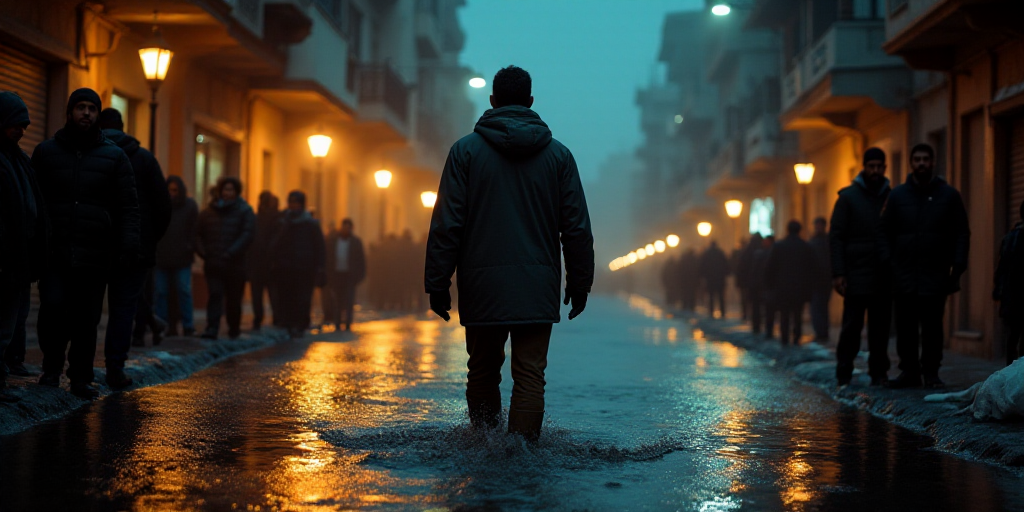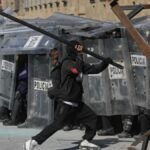Record-Breaking Rainfall in Eastern Mexico City
On Saturday, the eastern part of Mexico City experienced one of its most intense rainfall events this year. The Secretariat for Integral Risk Management and Civil Protection activated the purple alert, the highest level of emergency, due to the magnitude of the storm that lasted over two and a half hours in Iztapalapa, Tláhuac, and Venustiano Carranza. This resulted in severe flooding, suspension of service on the Metro Line A, and collapse of traffic on Calzada Ignacio Zaragoza.
Historical Rainfall Records
In a message to the citizenry, Iztapalapa’s mayor, Aleida Alavez, described the event as one of the most intense rainfalls in recent history for the district. She acknowledged families affected by flooding in their homes, streets, and businesses. Immediately, she activated protection civil brigades, workers, urban services, and auxiliary police to lower water levels in still-inundated colonies.
José Mario Esparza Hernández’s Statement
José Mario Esparza Hernández, the secretary of the Integral Water Institute (SEGIAGUA), explained that the storm exceeded 91 mm of rainfall in the eastern zone and discharged over 28 million cubic meters of water on Mexico City and 60 million at the metropolitan level. He mentioned that, although rain had stopped, the challenge was to evacuate excess water: “We will continue working all night to lower water levels and assist in cleaning streets and homes. More than 15 pluviometric stations recorded over 30 mm, a level that marks the beginning of serious drainage complications,” he said.
Most Affected Colonies
The most affected colonies were UH Vicente Guerrero, Ejército de Oriente, La Nopalera, La Colmena, Ampliación Santiago Acahualtepec, Santa Cruz Acalpixca, and Desarrollo Urbano Quetzalcóatl, as well as San Juan Ixtayopan and San José in Tláhuac.
Hundreds Stranded on Calzada Ignacio Zaragoza
The storm paralyzed public transportation in one of the most important corridors connecting Mexico City to the eastern Valley of Mexico. In the Peñón Viejo area, hundreds of passengers on buses and combis were stranded and had to continue their journey on foot, wading through knee-deep water in the darkness. Parents carried children on their shoulders or wrapped in blankets to keep them dry, while others climbed walls or walked alongside fences to avoid the current. Some helped each other, using their phones as flashlights to navigate.
Metro and Mobility Affected
The Mexico City Metro reported that the Line A only operated between Pantitlán and Guelatao in both directions, suspending the La Paz segment until further notice. Thousands of commuters heading to Chalco, Valle de Chalco, or Iztapalapa were left without transportation and opted to walk along the flooded highway to reach home.
As of Sunday morning, authorities had not reported the status of the Line A service. The Secretariat for Works, Water System, and Protection Civil personnel remain in the area with Operation Tlaloque and pumping equipment to reduce water levels. Brigades of Citizen Participation are conducting house-to-house tours to assess damages and offer support to affected families.
Key Questions and Answers
- What caused the severe flooding in Iztapalapa? Historical rainfall records were broken, with 90.75 mm of accumulated rain in La Quebradora Rebombeo Station and over 70 mm in Lomas de Zaragoza, Ejército de Oriente, and Cárcel de Mujeres.
- Who are the key figures involved in managing the crisis? Clara Brugada Molina, head of government; Aleida Alavez, mayor of Iztapalapa; and José Mario Esparza Hernández, secretary of SEGIAGUA.
- Which areas were most affected by the flooding? UH Vicente Guerrero, Ejército de Oriente, La Nopalera, La Colmena, Ampliación Santiago Acahualtepec, Santa Cruz Acalpixca, Desarrollo Urbano Quetzalcóatl, San Juan Ixtayopan, and San José in Tláhuac.
- How did the storm impact transportation? The storm paralyzed public transport in Calzada Ignacio Zaragoza, leaving hundreds stranded and forcing them to walk through knee-deep water. The Metro Line A was also suspended between Pantititlán and Guelatao.






